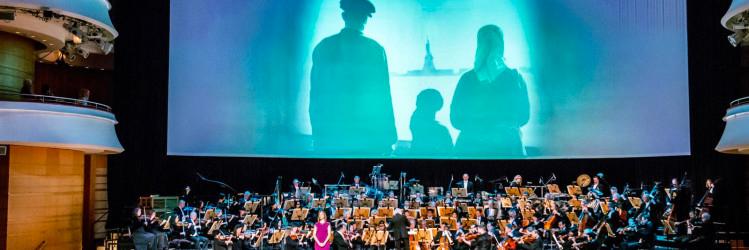
Okay…so, you’ve made some New Year’s resolutions and you’re definitely going to keep them this year, right? Well, if it doesn’t end up working out between you and those pesky resolutions? Don’t worry, only about 8% of people actually end up sticking to their goals for the new year.
Maybe that’s because New Year’s resolutions tend to be too mundane to be exciting, too vague to be executed, or too ambitious to be practical. I thought I’d take a stab at using new classical music to make the most common New Year’s resolutions a little more palatable, focused, and achievable. A research firm tracking Google searches determined that the top resolutions for this year are:
- Get Healthy
- Get Organized
- Live Life to the Fullest
- Learn New Hobbies
- Spend Less/Save More
- Travel
- Read More
If you’re wanting to do any of those things in the new year without actually doing them, here’s some music to help.
Get Healthy: Since everyone has different definitions of what it means to “get healthy,” I decided to go with a parody piece for this most common New Year’s resolution. The Dutch composer and sound artist Jacob TV (Jacob ter Veldhuis) based The Body of Your Dreams, for piano (or saxophone quartet or string quartet or guitar duet) and recorded soundtrack, on a ridiculous infomercial for a product of questionable effectiveness. The resulting work, where the piano imitates the narration and testimonials of the infomercial, is subversive and hilarious.
Get Organized: For most people, this means going through that junk drawer or being better about keeping all of those various calendars (paper and electronic) for the family all synched up. For our purposes here, I’m using the activist definition of the word “organized.” In 2014-15, composer Courtney Bryan wrote Sanctum, a powerful work that she says is “my artistic response to recent events of police brutality.” She was inspired by religious sermons, hymns, and the marching of Black Lives Matter activists in the streets of Ferguson, Missouri. She also incorporates the sounds of the Ferguson protests as well as the voice of Marlene Pinnock, a woman who was filmed by a bystander being brutally beaten by a police officer on the shoulder of a Los Angeles freeway.
Live Life to the Fullest: Okay, so the music here isn’t super new (Gershwin’s Girl Crazy, from 1930), but the concept of a vocal soloist doubling as an orchestra conductor is an amazing and revolutionary concept that Barbara Hannigan is proving is totally possible. In the process, Hannigan is also proving that she’s one of the most exciting musical artists in the world.
Learn New Hobbies: Here, we could also say don’t hate it until you’ve tried it. For that sentiment, I recommend Alex Temple’s tribute/critique of Frank Zappa: The Man Who Hated Everything. In Temple’s work, she explores the various musical styles associated with Zappa. The end result is a piece that enthusiastically bounces from moment to moment in surprising and often hilarious ways.
Spend Less/Save More: Perhaps this is the opposite of spend less/save more, as the Eiffel Tower is worth close to 500 billion euros annually to the French economy. An instrument that costs half a trillion euros isn’t exactly spending less (and, in fact, makes those pricey Strads seem cheap), but then composer/percussionist/organist Joseph Bertolozzi didn’t have to buy the Eiffel Tower to play the Eiffel Tower. Not long ago, Bertolozzi recorded an album of music that he wrote where the only instrument is the Eiffel Tower. You can see how he does it here. You can hear the result of his work here.
Travel: Literally hundreds of pieces of music from hundreds of years of music history could fit here. I’ve chosen a work from inspired by the wide-open landscapes of the Alaskan wilderness composed by John Luther Adams. A string quartet called The Wind in the High Places in which the only notes that are played are either open strings or harmonics. In other words, the players never touch the fingerboards of their instruments. (If you’d like to hear a live performance of this work, join me at this concert in February by the Salastina Music Society.)
Read More: Here’s a piece of music that will likely inspire you to read more. Los Angeles composer Reena Esmail set the words of four authors (Eleanor Roosevelt, Maya Angelou, Arlene Geller, and Emily Dickinson) in her multi-movement work for women’s chorus I Rise: Women in Song. Reena writes, “Some of the movements are sweet, subtle, and nostalgic. Others are fiery and bold. Some coalesce into their shape as they move along and others unravel towards their ends. Each movement is a reflection on a single facet of the multifaceted experience of being a woman in this world.”







